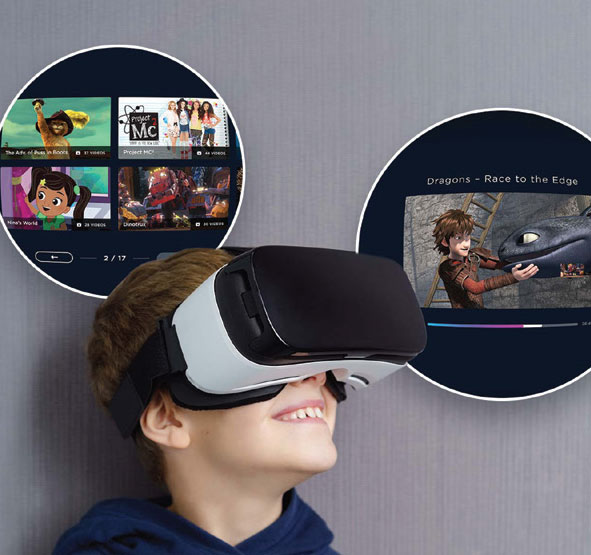Retinal Therapy
Refillable Anti-VEGF Port Delivery System Approved
In October, the FDA approved Genentech’s port-delivery system with ranibizumab, now called Susvimo (ranibizumab injection) 100 mg/mL, for intravitreal use via ocular implant for the treatment of neovascular age-related macular degeneration that’s previously responded to at least two anti-vascular endothelial growth factor (VEGF) injections.
Genentech says that Susvimo is the only FDA-approved treatment for wet AMD that offers as few as two treatments per year. Susvimo is a refillable, permanent eye implant that continuously releases a customized formulation of ranibizumab to the eye. The implant is surgically inserted into the eye during a one-time, outpatient procedure and refilled every six months.
The approval is based on the results of the Phase III Archway study, which the company says showed wet AMD patients treated with Susvimo achieved vision gains equivalent to monthly ranibizumab injections through 40 weeks of treatment. For more information, visit gene.com.
Xipere is Here
Also in October, the FDA approved Xipere, (triamcinolone acetonide injectable suspension) Bausch + Lomb/Clearside Biomedical’s suprachoroidal injection for the treatment of uveitic macular edema. Xipere is the first drug to use the suprachoroidal space, which the company says provides targeted delivery and compartmentalization of medication. To deliver the drug to the suprachoroidal space, the physician uses the proprietary SCS Microinjector, which was developed by Clearside.
The FDA approval of Xipere was based on results from PEACHTREE, a randomized, multicenter, double-masked, sham-controlled Phase III clinical trial of 160 patients with macular edema associated with uveitis. The primary efficacy endpoint was improvement in best-corrected vision by at least 15 letters from baseline after 24 weeks. The drug’s maker says that, in the trial, a statistically significantly greater proportion of patients treated with Xipere (47 percent) achieved at least a 15-letter improvement in BCVA than patients in the control arm (16 percent, p<0.01) at Week 24.
The company says the drug will be available for sale in the first quarter of 2022. For information, visit bausch.com.
Ocular Surface
Follow Your Nose to Dry-eye Relief
Applying topical eye drops has long been a mainstay of treating dry-eye disease, but patient noncompliance and the potential for ocular irritation can challenge patients. An alternative approach using nasal stimulation of the trigeminal parasympathetic pathway now is possible with a unique repurposing of the pharmaceutical agent varenicline, which is also used in the smoking-cessation drug Chantix. The new nasally-administered dry-eye treatment, called Tyrvaya (varenicline solution 0.03 mg) from Oyster Point Pharma, recently received FDA approval.
Tyrvaya, a cholinergic agonist, triggers basal tear production, the company explains. After four weeks of b.i.d. administration, about half of patients using the treatment demonstrated 10 mm or more improvement in Schirmer’s scores, according to a company statement. The most common patient complaint was sneezing, reported in 82 percent of the study participants.
The spray will be available by prescription beginning in November, Oyster Point says. For more information, visit oysterpointrx.com.
Pediatric Ophthalmology
New Amblyopia Therapy Approved
 |
Luminopia says its new software, Luminopia One, is the first FDA approved digital therapeutic for children with amblyopia—and the first for any neuro-visual disorder. The software is designed for use with compatible head-mounted displays, and is indicated for children aged 4 to 7 with amblyopia associated with anisometropia and/or mild strabismus who are receiving treatment instruction by a trained eye-care professional.
The company says Luminopia One allows kids to watch therapeutically modified versions of their favorite TV shows and movies with a virtual reality headset to improve their vision by training the eyes to work together. The therapy is prescribed for use at home for one hour per day, six days a week, for 12-week periods. For more information, visit luminopia.com.
Imaging and Testing
Eidon Offers a Wider View
The Eidon ultra-widefield lens is the newest module in iCare’s confocal retinal imaging platform. The lens module captures 120-degree images of a patient’s retina in one shot, or up to 200-degree images with its mosaic function, the company says. iCare says the high optical resolution enables clinicians to detect small details and signs of pathology from the center to the periphery. The module can also be retrofitted to most Eidon fundus imaging systems, the company adds, allowing capture of ultra-widefield infrared, autofluorescence and fluorescein angiography images.
For information, visit icare-world.com/uwfl.
Front-to-back Assessment of Pathologies
A new multi-modal device can perform various assessments that may help you detect early signs of cataracts, glaucoma, retinal and corneal pathologies, the manufacturer suggests. The Visionix VX650 from Luneau Technology brings together into one device the abilities of the following equipment: autorefractor; keratometer; aberrometer; topographer; pachymeter; Scheimpflug camera; tonometer; and 45-degree fundus camera, according to a company press release.
Capturing such data with a single device reduces patient movement through the practice, improving convenience and workflow efficiency, Luneau suggests, by allowing for ocular health screenings to be done in the pre-test room.
For more information, visit luneautechusa.com.
A New Player In Electrophysiology Testing
The MonPackOne Vision Monitor, a visual function analysis platform, was recently approved by the FDA for vision electrophysiology testing.
Metrovision says the system can perform dark adaptometry, full-field stimulus threshold testing, pupillometry and vision electrophysiology testing such as ganzfeld flash electroretinography (ERG) and visual-evoked potential (VEP), pattern ERG and VEP, multifocal ERG and VEP and sensory electro-oculography. Additionally, the company says that MonPackOne is the only commercially available instrument that performs both dark- and light-adapted full-field perimetry.
For information, call +1 (716) 352-2009.
Keep Your Distance, Get Your Data
An autophoropter, the Vision-S 700 refraction station, recently launched by Essilor Instruments, allows for remotely controlled testing, requiring no physical contact between you and the patient from start to finish, says the company.
The new device uses a unique “liquid lens” optical module and software algorithms that allow simultaneous and continuous variations of lens power by automatically compensating for any change in sphere, cylinder and axis. Essilor says this feature cuts time from the refraction process—potentially down to three minutes—without sacrificing accuracy.
For more information, visit essilorinstrumentsusa.com.



